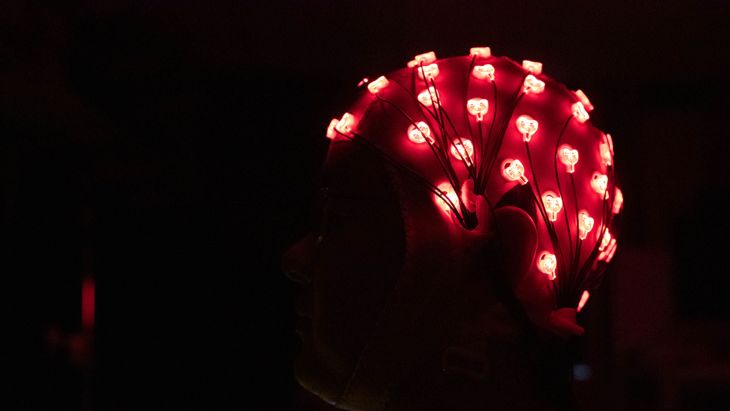Scientists have shown for the first time that briefly tuning into a person’s individual brainwave cycle before they perform a learning task dramatically boosts the speed at which cognitive skills improve.
Calibrating rates of information delivery to match the natural tempo of our brains increases our capacity to absorb and adapt to new information, according to the team behind the study.
University of Cambridge researchers say that these techniques could help us retain “neuroplasticity” much later in life and advance lifelong learning.
“Each brain has its own natural rhythm, generated by the oscillation of neurons working together,” said Prof Zoe Kourtzi, senior author of the study from Cambridge’s Department of Psychology. “We simulated these fluctuations so the brain is in tune with itself – and in the best state to flourish.”
“Our brain’s plasticity is the ability to restructure and learn new things, continually building on previous patterns of neuronal interactions. By harnessing brainwave rhythms, it may be possible to enhance flexible learning across the lifespan, from infancy to older adulthood,” Kourtzi said.
The findings, published in the journal Cerebral Cortex, will be explored as part of the Centre for Lifelong Learning and Individualised Cognition: a research collaboration between Cambridge and Nanyang Technological University (NTU), Singapore.
Professor Zoe Kourtzi
Professor Zoe Kourtzi
The neuroscientists used electroencephalography – or EEG – sensors attached to the head to measure electrical activity in the brain of 80 study participants, and sample brainwave rhythms.
The team took alpha waves readings. The mid-range of the brainwave spectrum, this wave frequency tends to dominate when we are awake and relaxed.
Alpha waves oscillate between eight to twelve hertz: a full cycle every 85-125 milliseconds. However, every person has their own peak alpha frequency within that range.
Scientists used these readings to create an optical “pulse”: a white square flickering on a dark background at the same tempo as each person’s individual alpha wave.
Participants got a 1.5-second dose of personalised pulse to set their brain working at its natural rhythm – a technique called “entrainment” – before being presented with a tricky quick-fire cognitive task: trying to identify specific shapes within a barrage of visual clutter.
A brainwave cycle consists of a peak and trough. Some participants received pulses matching the peak of their waves, some the trough, while some got rhythms that were either random or at the wrong rate (a little faster or slower). Each participant repeated over 800 variations of the cognitive task, and the neuroscientists measured how quickly people improved.
The learning rate for those locked into the right rhythm was at least three times faster than for all the other groups. When participants returned the next day to complete another round of tasks, those who learned much faster under entrainment had maintained their higher performance level.
“It was exciting to uncover the specific conditions you need to get this impressive boost in learning,” said first author Dr Elizabeth Michael, now at Cambridge’s Cognition and Brain Sciences Unit.
“The intervention itself is very simple, just a brief flicker on a screen, but when we hit the right frequency plus the right phase alignment, it seems to have a strong and lasting effect.”
Importantly, entrainment pulses need to chime with the trough of a brainwave. Scientists believe this is the point in a cycle when neurons are in a state of “high receptivity”.







